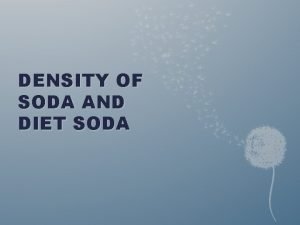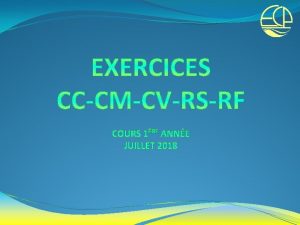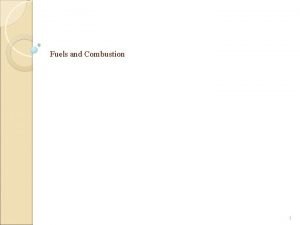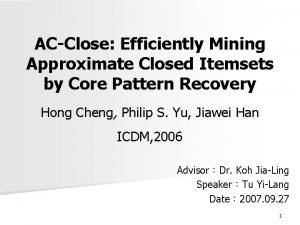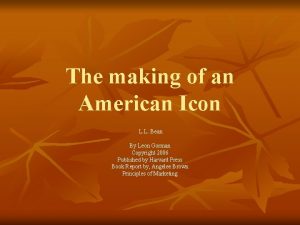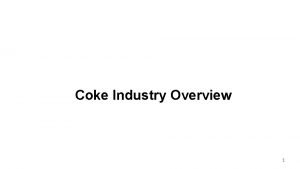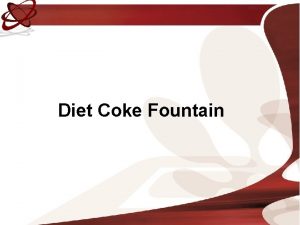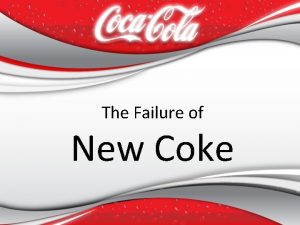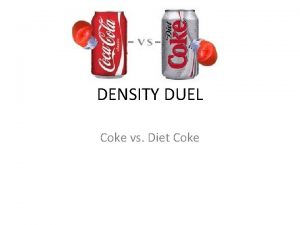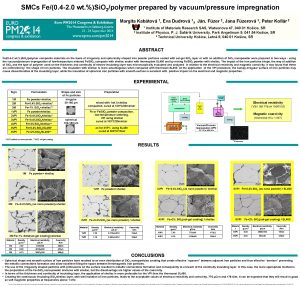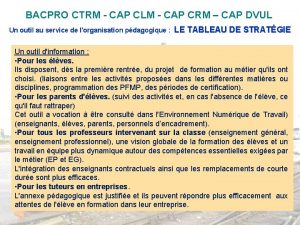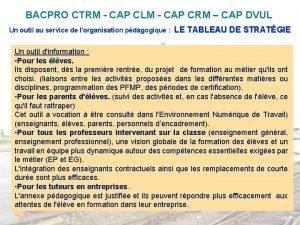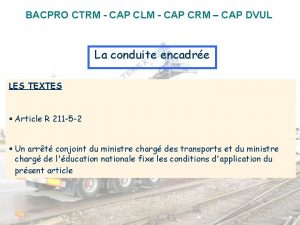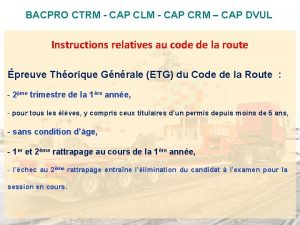Fe0 and Coke as Active Cap Media for























- Slides: 23

Fe(0) and Coke as “Active” Cap Media for PCB Destruction/Sequestration Gregory V. Lowry Kathleen M. Johnson Paul J. Murphy Meghan L. Smith EPA-TIO Anacostia River Internet Seminar March 12, 2003 B 1

Overview • “Active” cap concept • Potential “active” media – Fe(0)-based media for PCB dechlorination – Coke breeze to strongly sequester PCBs • Simulated cap performance • Media concerns • Summary B 2

Conceptual Model River Water q +Z Z=0 Degradable Products Bioturbation Layer Active Layer(s) Consolidation Layer Contaminated Sediment Criteria: No PCB flux through active layer after 100 years B 3

Potential “Active” Media • Study Goals – Evaluate suitability of Fe(0) and coke as ‘active” media • Measure PCB destruction rates and partition coefficients • Determine cap composition and thickness • Estimate costs based on reactivity, lifetime, and materials costs B 4

Rationale for Fe(0) • Fe(0)-based reactants are proven dechlorinators – Fe(0) dechlorinates halogenated hydrocarbons • e. g. TCE and other chlorinated solvents • Extensive use in PRBs – Pd/Fe(0) dechlorinates PCBs • Grittini et al. 1995, Wang et al. 1997 – Nano-sized Fe(0) may dechlorinate PCBs • Wang et al. 1997 • Low levels of H 2 produced during Fe(0) corrosion – Potential to stimulate microbial dechlorination B 5

Approach Fe(0) • Batch experiments monitoring PCB loss and product formation – Peerless Fe(0) – Pd/Fe(0) – Nano-size iron • Individual PCB congeners – Structure/activity relationships B 6

Fe(0) Media Nano Fe(0) Size: 1 -100 nm 0. 05% Pd/Peerless Fe(0) Size: 0. 355 - 2. 36 mm Fisher Fe(0) Size: 0. 15 mm Peerless Fe(0) B 7 Size: 0. 355 - 2. 36 mm

Nano Fe(0) B 8

0. 05% Pd/Fe(0) B 9

Fe(0) Reactive Media Summary MEDIA RESULTS k (yr – 1) RELATIVE COST Commercial Fe(0) No Observable Reaction 0 $$ Pd/Fe(0) (500 ppmw Pd) Rapid dechlorination of 22’ 35’ does not appear sustainable 21 $$$ Nano Fe(0) Dechlorination of 22’ 35’-CB to 22’ 3 -CB and other congeners 6 $$$$ B 10

Rationale for Coke Breeze • Inexpensive – ~$40/ton • Environmentally Friendly – TCLP good – Likely to meet SQVs and CCC* standards *EPA 822 -Z-99 -001 • Sequestered PCBs less bioavailable – Talley et al. 2002 B 11

Furnace Coke and Coke Breeze B 12

Properties: Coal vs. Coke COAL COKE Moisture (%) 4 2 Volatile Organics (%) 30 0. 7 Fixed Carbon (%) 60 92 Ash (%) 6 7 Porosity (%) -- 45 -50 Size (mm) -- <20 Particle Density (g/cm 3) B 13 1. 9 -2. 0

Sorptive Media • Coke – Strong PCB sorption (Kd) – Less bioavailable (Talley et al. h 2002) ) nt e im d e S w) (lo Fl h s y. A Kd (L/kg) SORPTION STRENGTH b B 14 n e m i d e S Jonker et al. 2002 g i h ( t E K CO d e t a v i t Ac rbon Ca

Modeling Diffusive Transport of Biphenyl CAP MEDIA n (--) Kd (L/kg) R Sand a 0. 35 10 52 Peerless Fe(0) b 0. 5 200 800 Coke 0. 6 60, 000 72, 000 af 0. 001, b foc = 0. 02, Kd=Koc*foc, log Koc =4 (biphenyl) De=1. 9 E-5 cm 2/s for all cases. This incorporates diurnal seepage of ± 5 cm/d due to tides. B 15 oc =

Simulated Porewater Concentration Profiles of Biphenyl after 100 Years B 16

100 -Year Performance: Required Active Layer Thickness & Cost $/m 2 ($/ft 2) B 17

Media Concerns • Toxicity – Fe(0) • Peerless Fe(0) contains heavy metals (% range) • Metals should remain sequestered (not demonstrated) – Coke • • B 18 Little or no concern TCLP test OK CCC should be met (under investigation) SQVs should be met (under investigation)

Coke: TCLP and CCC Criteria Metal Arsenic Barium Cadmium Chromium Lead Selenium Mercury Silver Coke (mg/kg) Leachate (mg/L) <0. 1 TCLP Limit (mg/L) 5. 0 CCC Limit (mg/L) 0. 15 <10 22 <10 <10 <0. 033 <10 0. 5 <0. 1 <0. 0002 <0. 1 100 1 5 5 1 0. 2 5 N/A 0. 0043 0. 59 0. 065 N/A 0. 0014 0. 0034 TCLP=Toxic Characteristics Leaching Procedure CCC=Criterion Continuous Concentration B 19

Active Capping Summary • Coke – Inexpensive and promising PCB sequestration media – Thinnest caps possible – Provides NO PCB dechlorination • Fe(0) – Cost-effective abiotic PCB destruction NOT currently possible – Fe(0)-enhanced biodegradation possible, but not yet explored • Mixed Fe(0)/coke cap – Provides sequestration – PCB dechlorination possible but not proven B 20

Ongoing Research • PCB sorption isotherms for coke breeze • Fe(0)-sediment-coke microcosms to assess potential for enhanced PCB biodegradation • Column studies to assess long term performance of each media • Methods for Evaluating Cap Performance B 21

Acknowledgements • • B 22 HSRC S & SW EPA SITE Program NSF Alcoa

Thank You After viewing the links to additional resources, please complete our online feedback form. Thank You Links to Additional Resources B 23 C 23
 Coke vs diet coke density lab report
Coke vs diet coke density lab report Hvad menes der med et handicapresultat
Hvad menes der med et handicapresultat Cap compas
Cap compas Marketing mix of pepsi and coca cola
Marketing mix of pepsi and coca cola The coke family
The coke family Countable and uncountable nouns таблица
Countable and uncountable nouns таблица Hcv and lcv formula
Hcv and lcv formula Soda countable or uncountable
Soda countable or uncountable Was diet coke
Was diet coke Coke coffee
Coke coffee Killer coke
Killer coke Post colonial literature
Post colonial literature Share a coke with lisa
Share a coke with lisa 3 to 8 decoder truth table
3 to 8 decoder truth table Active transport
Active transport Primary active transport vs secondary active transport
Primary active transport vs secondary active transport Fspos vägledning för kontinuitetshantering
Fspos vägledning för kontinuitetshantering Novell typiska drag
Novell typiska drag Tack för att ni lyssnade bild
Tack för att ni lyssnade bild Returpilarna
Returpilarna Varför kallas perioden 1918-1939 för mellankrigstiden?
Varför kallas perioden 1918-1939 för mellankrigstiden? En lathund för arbete med kontinuitetshantering
En lathund för arbete med kontinuitetshantering Adressändring ideell förening
Adressändring ideell förening Personlig tidbok för yrkesförare
Personlig tidbok för yrkesförare
